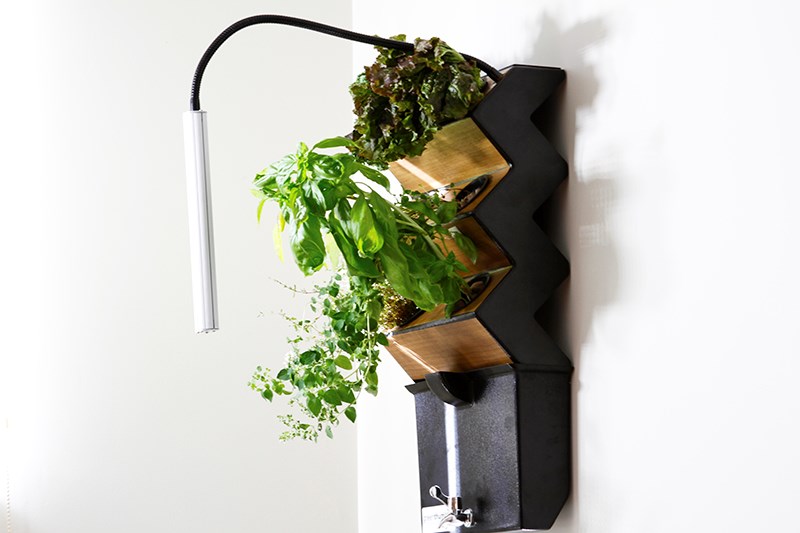A local company has come up with a way to grow food indoors with little space required.
Green Thumb Technology has been working on a system called the “Veggie Wall.”
The technology allows people to produce their own food crops in a small space in modules that can be stacked vertically.
This week Green Thumb’s Veggie Wall product is officially a reality with the company’s Oct. 4 Kickstarter campaign.
“This is sort of the final test,” said Green Thumb’s Jen McGuinness.
The plan started three years ago when McGuiness started looking into how to make better use of vertical space for her balcony garden in Valleycliffe. She knew that most vertically “living walls” grow houseplants, but she wondered how vegetables could be grown vertically and began to research. She also wanted something that a person with no gardening experience could use.
“You don’t have to have that growing experience,” she said.
Most hydroponic systems are horizontally oriented, so water distribution is not an issue, but space is. The couple other vertical systems, however, faced challenges when it comes to water distribution.
“Eventually, the system clogs because the openings are so small,” she said.
She then approached her friend Matt Mei to help with the design. The big challenge early on was coming up with a system to avoid clogs and distribute water to plants consistently. Eventually, they worked out a high-flow system that would guarantee water distribution but avoid overflows.
“It’s a new hydroponic system,” she said.
Beyond this, there was still a question of how to make the LED lights needed for the system cost effective.
Last fall, Green Thumb received funding from the National Research Council to hire industrial design students from Emily Carr University to help with issues such as the lighting.
“They helped with creating that mould and that process of assembly,” McGuiness said.
Earlier this year, Green Thumb met with manufacturers to get quotes and chose a Langley company to produce moulds.
Along the way, the company has produced small test runs for each design.
“We wanted it to be vertical. We wanted it to be easy to use. We wanted it to be modular,” she said.
With the patent for the Veggie Wall filed Oct. 3, the door is now open for the Kickstarter campaign. The challenge will be to make sure the campaign hits its $50,000 target by the end on Nov. 6. McGuiness points out that no one is actually charged until the end of the campaign, adding there are ways to support Veggie Wall on Kickstarter even if someone does not want to buy the unit.
The other challenge is time, as getting a brisk start is considered important for Kickstarter in terms of improving the chances of a campaign reaching its target.
If successful, the first order of business will be to provide the product to supporters.
“The first thing is to fulfill the orders,” McGuiness said. “We already have the modules made… That’s number one – getting the product to people.”
It will also give Green Thumb a sense of how much interest there is and whether the company needs to approach a financial institution or another investor to provide more capital for its plans.
“It gives us some leverage, and it proves that the product is something that consumers want,” she said.
For information about the Veggie Wall and the Kickstarter campaign, go to www.greenthumbtech.com.



